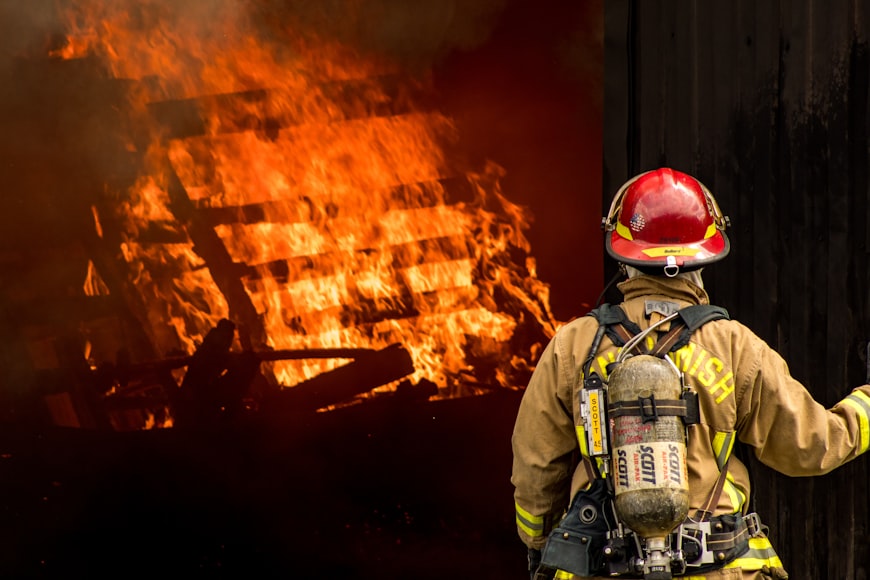 Posted On
Posted On
Firefighters Are At A Higher Risk Of Getting Cancer: Here’s Why
 Posted On
Posted On
Firefighters are often seen as heroes, rushing into burning buildings to save lives and property. However, what many people may not realize is that firefighters are at a higher risk of developing cancer than the general population. This is due to the unique and dangerous nature of their job, which exposes them to a variety of carcinogens on a regular basis.
This article will delve into the alarming reality of how firefighters face a higher risk of developing cancer as compared to the general population. We will examine the various causes of this increased risk, including the inhalation of toxic chemicals and fumes during fires and prolonged exposure to carcinogens such as perfluoroalkyl substances (PFAs).
Additionally, we will explore the long-term effects on the health of firefighters and their families, as well as the importance of early detection and prevention measures.
The article will also cover the legislative efforts to provide better benefits and compensation for firefighters who are diagnosed with cancer. Join us as we unravel the reasons behind this serious issue and discuss potential solutions to protect the brave men and women who risk their lives to save others.
Table of Contents
The Firefighting Foam Used for Training and for Fighting Fires Is a Big Problem
One of the significant contributors to the increased risk of cancer among firefighters is the use of firefighting foam. This foam, also known as aqueous film-forming foam (AFFF), is used for both training and fighting fires. It is designed to extinguish liquid fuel fires by creating a barrier on top of the fuel to prevent oxygen from reaching it.
However, AFFF contains a number of toxic chemicals, including perfluoroalkyl and polyfluoroalkyl substances (PFAS), which are known to be carcinogenic. Several studies suggest that exposure to such carcinogens increases the incidence of certain health conditions like rectal, prostate, bladder, and testicular cancers along with mesothelioma and malignant melanoma in firefighters as compared to the general population.
When AFFF is used during training exercises or in real fires, it creates a mist that can be inhaled by firefighters, exposing them to these toxic chemicals. Additionally, the foam can seep into the ground and contaminate local water sources, putting both firefighters and nearby residents at risk. PFAS can accumulate in the body over time and has been linked to a number of health problems, including cancer.
The problem is not limited to the firefighters only but also the people living near the fire stations or airports where these foams are used. These toxic chemicals can also contaminate the local water supply and expose residents to the same risks as firefighters.
These Chemicals Are Linked to Cancer as Well as Birth Defects and Thyroid Problems
In addition to cancer, exposure to these chemicals has also been linked to birth defects and thyroid problems. Studies have shown that PFAS can cross the placenta, potentially exposing developing fetuses to these toxic chemicals. This can lead to a number of birth defects, including developmental delays, childhood obesity, and problems with the reproductive system.
PFAS can also disrupt the normal functioning of the thyroid gland, which is responsible for regulating metabolism and other important bodily functions. Exposure to these chemicals has been linked to decreased thyroid hormone levels, leading to a number of health problems, including fatigue, weight gain, and depression.
It’s important to note that the link between these chemicals and health problems is still being studied, and more research is needed to fully understand the extent of the risks associated with exposure to PFAS and other toxic chemicals found in firefighting materials.
The increasing body of evidence of the health hazards of these chemicals highlights the need for more stringent regulations and for the development of safer alternatives for firefighting materials. This will help to protect firefighters, as well as people living near fire stations and airports, from these dangerous chemicals.
Firefighters Are Suing the Manufacturers Over Exposure to Toxic Chemicals
In recent years, a number of firefighters and their families have filed a Firefighting Foam Lawsuit against the manufacturers of firefighting foam and other materials, claiming that their exposure to these toxic chemicals has led to serious health problems, including cancer. The lawsuits allege that the manufacturers knew or should have known about the dangers of these chemicals but failed to warn firefighters and other users about the risks.
In the lawsuits, firefighters are seeking compensation for medical expenses, lost wages, and pain and suffering. They are also seeking to hold manufacturers accountable for their role in exposing firefighters to these dangerous chemicals.
One example is the case of 3M Co., a manufacturer of AFFF, which was sued by several firefighters, who alleged that their exposure to the foam caused them to develop cancer. The company is set to stop the production of PFAS by 2025.
These lawsuits have been filed in several states across the country and have raised awareness of the issue of toxic chemicals in firefighting materials. They have also led to increased pressure on manufacturers to develop safer alternatives and on government agencies to take action to protect firefighters from these dangerous chemicals.
The Potential Solutions To Combat This Problem
Given the serious health risks associated with exposure to toxic chemicals in firefighting materials, it is crucial that steps are taken to protect firefighters and others from these dangers. There are several potential solutions that can help to combat this problem, including:
- Research and development of safer alternatives: One of the most important steps that can be taken is to invest in research and development of safer alternatives to firefighting foam and other materials that contain toxic chemicals. This includes developing foams that do not contain PFAS and other carcinogens, as well as alternative fire extinguishing agents.
- Improved protective gear and equipment: Another important step is to provide firefighters with better protective gear and equipment that can help to reduce their exposure to toxic chemicals. This includes full-face respirators, protective suits, and other specialized equipment that can help to keep harmful chemicals out of their lungs and away from their skin.
- Increased education and awareness: Another important step is to increase education and awareness about the risks associated with exposure to toxic chemicals in firefighting materials. This includes providing training and education to firefighters and other users of these materials on how to safely handle and use them, as well as providing information on the risks associated with exposure.
It’s important to note that addressing this issue will require a multi-faceted approach involving a combination of these solutions. Efforts should be made to work together to find the best possible solutions that can help to protect firefighters and others from the dangers associated with exposure to toxic chemicals in firefighting materials.
Conclusion
In conclusion, firefighters are at a higher risk of developing cancer than the general population due to their exposure to toxic chemicals in firefighting materials.
The use of firefighting foam, in particular, is a major contributor to this increased risk, as it contains carcinogenic chemicals such as PFAS. The long-term effects of exposure to these toxic chemicals can be devastating, including cancer, birth defects, and thyroid problems.
However, there are steps that can be taken to combat this problem. Research and development of safer alternatives, improved protective gear and equipment, increased education and awareness, legislative efforts, and environmental cleanup are some of the solutions that can help to protect firefighters and others from these dangerous chemicals.













